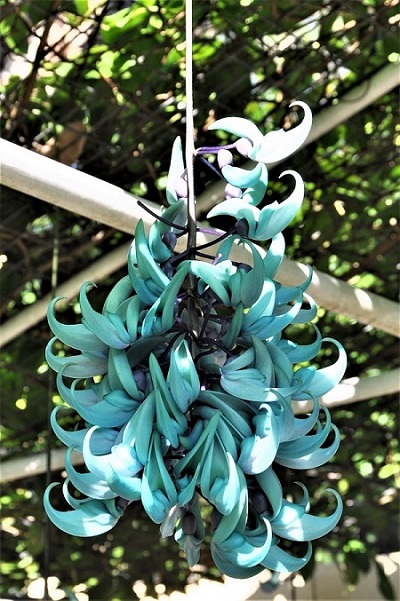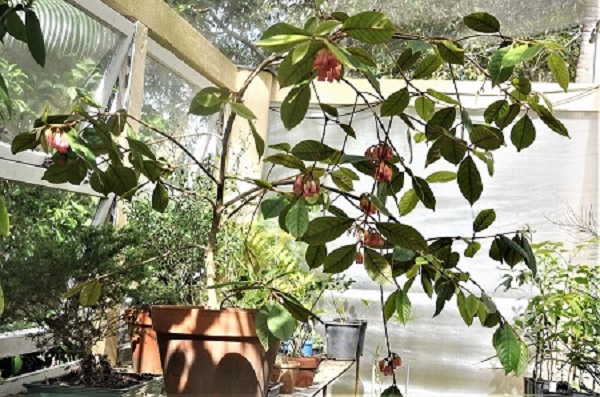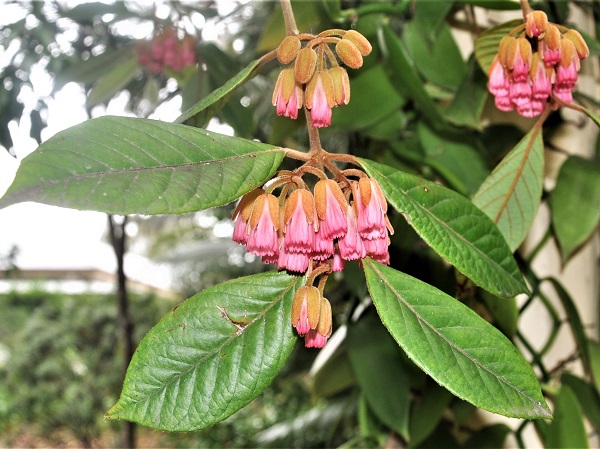
In most cases my preferred method of plant propagation is from seed. This produces a seedling with genetic variability and a new generation of the species which is one more step along the evolutionary path. There are many other methods available to us – stem and root cuttings, division, marcotting, grafting, tissue culture – but these all produce clones, horticultural clones being plants that have identical DNA.
In the natural world, clonal colonies of trees, shrubs, vines, ferns, mosses etc. do occur, either by vegetative fragmentation or, in certain cases, by asexual reproduction in a process called apomixis forming seeds that germinate to produce clones. The word itself originates in the Ancient Greek for twig, klon, in reference to creating plants from cuttings. We do see some problems associated with clonal reproduction in forestry and agriculture. Genetic monocultures, i.e., the planting of a single plant variety across a large area, can cause a crop to be more vulnerable to attack from pests and diseases. Examples include fusarium wilt wiping out the entire banana crop in the US in the 1950s and phytophthera causing the Great Potato Famine of Ireland. Hence, cultivars have gained a poor reputation amongst some. There are, however, some advantages derived from their use.
A cultivar is simply a cultivated variety, a plant with desirable features selected for cultivation and propagated to maintain those features. The development of hybrids in agriculture has led to disease resistance, less use of pesticides, herbicides and fungicides and more efficient use of land. In horticulture, as in agriculture, hybrid cultivars need to be reproduced clonally because (a) if fertile, they don’t produce seed true to form, or (b) they’re sterile. In the latter case this results in much less potential for the plant to become weedy while giving the grower a “better” plant. It may be that plants are more uniform in appearance (useful for hedging) or more compact or dwarfed (good in limited space), or they may be resistant to disease – e.g., a plant from an area with a Mediterranean climate may be prone to root rot when grown somewhere with a hot wet summer like Queensland. This can be overcome by grafting it onto the root stock of a closely related plant which originates locally or from somewhere with a similar climate. It may be that the flowers are showier or more abundant – e.g., double flowers have reproductive parts transformed into more petals, rendering them sterile. The altered flower shape or size can prevent pollinators from accessing nectar and pollen, also effectively causing sterility. Now this is a good thing if the aim is to prevent unwanted spread of the plant but it’s not if your aim is to provide food for wildlife. So, what to do in the Urban Wildlife Garden?
My advice would be to plant a large and diverse majority of species of more or less locally indigenous plants. With a smorgasbord thereby available for wildlife you can then choose plants useful to you: fruit and vegetables whose weediness can be controlled, the odd hybrid Grevillea, particularly if sterile, or favourite exotic. A favourite of mine is the Jade Vine (Strongylodon macrobotrys), grown for its stunning display of turquoise pea flowers. (photo above)

Touch wood, it hasn’t become a weed here as its pollinator, a microbat, is endemic to The Philippines so not present locally. Another option is to remove all seed of a desired plant which is fertile and considered weedy. A Curry Plant (Murraya koenigii), grown in a medium sized pot to control its size and tendency to root sucker, will provide plenty of leaves for cooking and seed can be easily removed. Cutting the small white fruit off a Night Scented Jasmine (Cestrum nocturnum) won’t prevent you enjoying the delicious fragrance.
As a final example of the value of cultivars I’d like to mention another old favourite: Rusty Carabeen or Aceratium ferruginium, a tree in Family Elaeocarpaceae from the wet tropics of Far North Queensland. (photo left)
As with some other members of the family, its seed is very reluctant to germinate but, while still problematic, is not as difficult to propagate from cutting. This method results in a plant criticised by some growers as lacking in form, shapeless. Seedlings of trees typically exhibit apical dominance, i.e., the growing tip dominates and the young plant goes straight up for the sky. Cuttings, however, typically grow in a more lateral, sideways fashion. There’s a cultivar of A. ferrugineum called “Flamingo Belle” (photo below) and it’s a pretty good bet that most examples of the tree in cultivation originated as cuttings of this one variety. They can start life in an anarchic, poorly shaped manner but given time, develop a low spreading habit mimicking the tree’s canopy.

This prematurity is caused by the age of the source of the original cuttings and, combined with a lack of seedling vigour, results in a smaller, slower growing plant with more lateral growth. Not only that but it can flower at less than a metre tall – not as spectacular as a 30 m. tree flowering in the highland rainforest of FNQ but certainly more accessible to most of us.
In my opinion, cultivars need not necessarily be avoided. They can be used judiciously to enhance the environment for you and wildlife.


